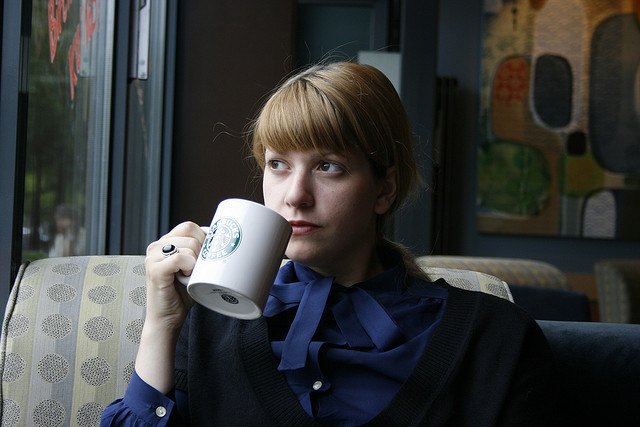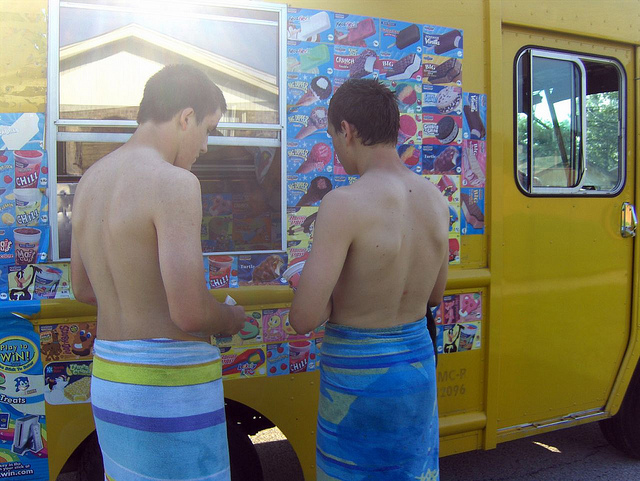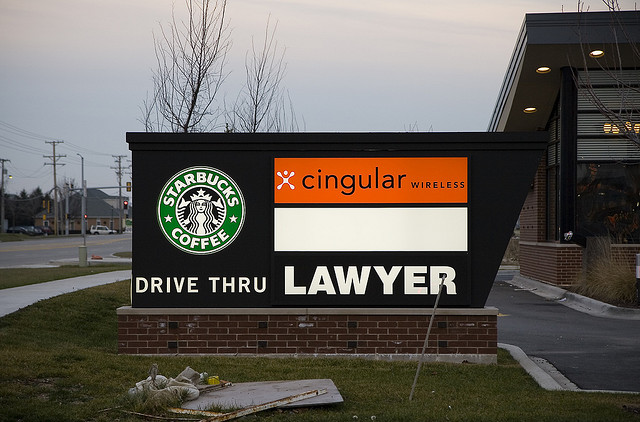Unlock the Magic in Your Story Now
Get the Free 20 questions to Ask Before Launching Your Idea workbook when you sign up for occasional updates.
Get the Free 20 questions to Ask Before Launching Your Idea workbook when you sign up for occasional updates.
Articles filed in: Marketing
We Don’t Need Better Marketing
filed in Marketing, Storytelling, Strategy
 When I was growing up in Dublin home baking was the norm. Most families couldn’t afford the luxury of expensive, shop bought cakes, so ironically something like a mass-produced Mr Kipling’s French Fancy was seen as a decadent treat—the kind that was rolled out on a doily when you were having a special guest or a visit from the local priest. Back then shoppers put complete trust in food manufacturers. The media presence of these companies meant that they were significant authorities in our lives. We encountered them daily through traditional advertising and we mostly didn’t question the truth beyond the story they presented us with.
When I was growing up in Dublin home baking was the norm. Most families couldn’t afford the luxury of expensive, shop bought cakes, so ironically something like a mass-produced Mr Kipling’s French Fancy was seen as a decadent treat—the kind that was rolled out on a doily when you were having a special guest or a visit from the local priest. Back then shoppers put complete trust in food manufacturers. The media presence of these companies meant that they were significant authorities in our lives. We encountered them daily through traditional advertising and we mostly didn’t question the truth beyond the story they presented us with.
I imagined Mr Kipling as a kindly old man like my grandad, who spent his days walking around dipping a spotless forefinger into big bowls of freshly whipped vanilla sponge mixture and painstakingly icing diagonal lines across pink and yellow confections. Shoppers believed Mr Kipling made ‘Exceedingly good cakes’ because he told us so during every ad break. We had no way of knowing any different or of digging deeper.
Forty years on and the packaged cake industry is in trouble. Sales are in decline. Shoppers are more savvy and have access to all the information they need to make better choices. Movements like Jamie Oliver’s Real Food Campaign have encouraged people to get back in the kitchen and take responsibility for their health. Now more than ever people want to know what’s in their food and to understand the health implications of their choices. Raw food startups, artisan food entrepreneurs and gluten free bakeries are popping up to serve this new more conscious consumer.
On the back of slower sales the company that owns and operates Mr Kipling—the UK’s most popular cake brand, has invested £10m into marketing Mr Kipling in the second half of 2014, bringing us new package design, an edible billboard, the boy shares cake with pink elephant advert and the ‘Life is better with cake’ slogan. “The new packaging will have a modern feel using an uplifting colour palate of pastel colours. The packs will deliver strong appetite appeal without feeling artificial and increase overall shelf appeal and visibility.”
The company invested £20 million at its packing facility “to double the manufacturing capacity of Mr Kipling Snack Packs” which will be marketed as a convenient single-serve item suitable for lunch boxes. Like many food brands they have added more clearly labelled nutritional information to the front of the packaging, because lobbyists and shoppers demanded greater transparency on food labels, so that people can decide how to make the ‘treat’ fit into their lives.
The packaging and the slogan may have changed, but it’s not clear that those changes are reflected inside the box, or what investment has been made to improve the product.
Changing the packaging doesn’t change the story.
We don’t need better marketing.
We need better products, made by trustworthy companies, led by brave leaders, who can look us in the eye and say hand on heart, ‘this really WILL make your life better’ because we put you first.
Image by Amanda Tipton.
Thanks to by health and food packaging gurus Alexx Stuart and Tessa Stuart (no relation!)
for their help with this one.
Thinking About Your Advantages
 Every traditional car dealer sells a similar product. What can one Ford dealer do that his competitors in the next suburb can’t? There is very little he has a monopoly on.
Every traditional car dealer sells a similar product. What can one Ford dealer do that his competitors in the next suburb can’t? There is very little he has a monopoly on.
John is a car dealer who has been operating in Perth for 45 years, he periodically takes out a double page spread in the local newspaper. Those two pages are filled with hundreds of testimonials from satisfied customers. Line after line of tightly spaced stories about how he and his staff have done the right thing by people. You only need to read the first six to know that John has invested in creating a monopoly on trust.
The advantages you can own are much closer to home than you think.
Image by What’s the Point SA.
How Value Is Created
filed in Marketing, Storytelling, Strategy
 Value is created at the intersection of the customer’s worldview and your understanding of how your product meets that.
Value is created at the intersection of the customer’s worldview and your understanding of how your product meets that.
If that’s hard to get your head around think about plugging a real world example into the model.
Customer’s Worldview:
Branded razors are expensive. The quality doesn’t reflect the price that I pay for them and I never seem to have a sharp razor when I need it.
Understanding and meeting that worldview:
Harry’s sells quality razors online at shaving products at half the price of leading competitors.
“Harry’s was built out of respect for quality craftsmanship, simple design, modern convenience and most importantly for guys who know they shouldn’t have to overpay for a great shave.
Like most of you, we’ve long had to choose between over-priced, over-marketed razors that disrespect your intelligence, and low quality, cheap razors that disrespect your face. We knew there had to be a better way, so we created Harry’s as a return to the essential: a great shave at a fair price.”
Now it’s your turn. Take five or ten minutes to do this. No MBA required!
How does your product intersect with and meet your customer’s worldview?
The Myth Of Differentiation
filed in Marketing, Storytelling, Strategy
 If we did a blind taste test on Starbucks coffee would the result tell us that Starbucks sells the best coffee in the world? Probably not, but the facts don’t stop Starbucks succeeding.
If we did a blind taste test on Starbucks coffee would the result tell us that Starbucks sells the best coffee in the world? Probably not, but the facts don’t stop Starbucks succeeding.
In theory differentiation is the way we create a tangible advantage. A method for giving people something to measure and a reason to choose you over the competition. As marketers we traditionally like to differentiate on facts. If we offer more or better we win. That doesn’t explain why the cafe selling $3 cups of coffee is empty, while the one right next door selling $4.50 coffees is packed (yes, it’s the true story of the two side-by-side cafes in my neighbourhood again.
Since in most cases ‘best’ is subjective and our choices are mainly driven by intuition not reason, there is no reliable way to prove advantage or predict success.
Rather than aiming to be ‘best’ in the eyes of everyone, what we must do is intentionally craft and tell a brand story for people with a particular worldview. That’s what Starbucks, Dropbox, Chipotle, Warby Parker and Shoes of Prey do. They work out how the customer wants to feel, not simply how to be better than what already exists.
People don’t buy the facts. They buy the feeling.
Image by Pablo Ferreira.
Why Strategy Must Come Before Tactics
 What’s the best time to send a tweet?
What’s the best time to send a tweet?
How do you develop a content strategy?
What’s the easiest way to drive traffic to your website?
How do you build a great landing page?
If you can ‘Google’ the question and get an answer does that give you an unfair advantage over your competitors?
Do you know of a single successful brand that thrived by focusing on the tactics, before understanding where implementing those tactics would take them?
It’s important to know where you are going and why, before you try to get there.
Don’t be afraid to ask the questions only you can answer.
Image by Ohad.
Motivating People To Buy
filed in Marketing, Storytelling, Strategy
 Imagine you have taken your children on a day trip to the seaside. It’s the perfect day, the sun is shining, the waves are lapping the shore and you’re having a day that you’ll never forget. There is a new gelato shop across the street selling home made ices at $5 a scoop. Clearly as a day-tripper you are already motivated and probably have the ability to pay $20 for a family treat on a day out. There’s nothing to stop you crossing the street, but you don’t.
Imagine you have taken your children on a day trip to the seaside. It’s the perfect day, the sun is shining, the waves are lapping the shore and you’re having a day that you’ll never forget. There is a new gelato shop across the street selling home made ices at $5 a scoop. Clearly as a day-tripper you are already motivated and probably have the ability to pay $20 for a family treat on a day out. There’s nothing to stop you crossing the street, but you don’t.
Buying is often mistakenly seen as an act—something done in the moment or in isolation. Buying is actually a behaviour that is something that’s done in response to either internal or external stimuli. The job of the marketer then is to encourage or induce that behaviour. Marketers mostly focus on trying to increase peoples’ motivation to buy. That’s what the creative directors and copywriters of the Mad Men era were employed to do. To make people want things.
As BJ Fogg points out in the Fogg Behaviour Model— behaviour is driven by three factors and motivation is just one of them. Motivation in isolation without the ability and trigger cannot change behaviour.
THE FOGG BEHAVIOUR MODEL
Back to the beach…..the guy who makes the amazing gelato opens the shop door at 11am.
He hopes that customers will be tempted inside by the heat of the midday sun. Thirty minutes later the tinny sound of ‘Greensleeves’ playing in the distance, signals the arrival of the Mr Whippy van on the street corner. Suddenly children who were happily digging in the sand stop and ask for an ice cream. All along the beach a small, synchronized ripple of movement begins as people react, reaching for wallets and covering up with towels as they head over to line up at the ice cream van.
It isn’t necessarily the person with the best idea who wins, it’s the person with the greatest understanding about what matters to people and how that translates to an opportunity to serve and delight them.
Image by Sheree Kozel-La Ha.
The New Story Of Value
filed in Marketing, Storytelling, Strategy
 Jen is a passionate entrepreneur who has been working on her project for over three years.
Jen is a passionate entrepreneur who has been working on her project for over three years.
This project is Jen’s baby—she lives and breathes it. You know the feeling.
Jen was finally at the stage of trademarking her company internationally, and because she wanted to do things right she engaged a lawyer to file the application. As often happens when you are filing in multiple classes an adverse report was returned, meaning she might not be able to register the trademark in some of the classes without a appeal. The lawyer sent through a note which outlined Jen’s options, mostly copied and pasted from the GOV.UK response and recommendations (with one important and repeated addition).
She could proceed, appeal, limit the classes or withdraw her application. The email reminded her repeatedly that any decision and next steps would “incur further legal costs”.
The result was a very deflated Jen, not because of what the email said, but because of how it was communicated.
What if the lawyer had picked up the phone and walked Jen through everything? What if she had explained the possibilities to Jen without using jargon or putting the issue of fees front and centre?
In a world where information is freely available, when domain knowledge becomes less scarce and the cost of doing business with anyone, anywhere becomes cheaper and cheaper, all of the value we provide will be in the humanity with which we do business. The ability to walk in our customers’ shoes, to feel what they feel and then to respond in the way we’d like to be treated, is what matters now and into the future.
Yes, the law is law and legal professionals are obliged to dot the i’s and cross the t’s AND to be compensated for it. Every professional is—but not at the expense of humanity.
What Jen wants more than the facts, which she can get with two clicks of her trackpad, is empathy.
Image by Brook Novak.
10 Brand Storytelling Lessons In 2 Minutes
filed in Marketing, Storytelling, Strategy
 Take two minutes to watch this advert from IKEA. Those two minutes are guaranteed to change how you think about marketing your business. This video is more than just advertising designed to sell something—it’s a home run in brand storytelling.
Take two minutes to watch this advert from IKEA. Those two minutes are guaranteed to change how you think about marketing your business. This video is more than just advertising designed to sell something—it’s a home run in brand storytelling.
Ten things IKEA did to make their story great
1. Understood their customer’s worldview.
They have clearly asked and answered this question a thousand times.
“Why do/will people shop at IKEA?”
2. Made the customer the hero.
The product always plays the supporting role. Always.
3. Started with the customer’s story.
Most marketing tells the story of the product or service. It screams… “we need to shift more stuff”.
This story whispers….”look what you could become”.
4. Changed how the customer felt and acted in the presence of their product.
His belief about what’s possible for him changes. The same story resonates with a college student who is kitting out her first home with flat-pack furniture and expectant parents furnishing a nursery.
5. Understood what they are really selling.
It’s not chairs or bookcases.
6. Helped us to see reflections of ourselves in the hero.
His story is our story. We are all on a quest to be the better versions of ourselves.
7. Tapped into our emotions, creating a visceral connection with the brand.
There is not a fact in sight—no product name, price, store location. Nothing.
8. Created advertising that aligns with the company’s vision and brand personality.
Did the advert make you feel good?
9. Backed up the story with the experience delivered in-store and across all touchpoints with the brand.
Consistency is key.
10. Gave potential customers something to believe in.
Helping us not just to buy products, but to buy into the brand story.
It’s so much easier to adopt default thinking and lead by telling people what we do—which is why most businesses do it. But you are not most businesses.
Your customers are waiting for you to give them something to believe in and to take them where they want to go.
Image by Linda.

 The sale of the
The sale of the  It seems like a step in the right direction when the giant multinational supermarket starts selling organic vegetables. But the story begins to unravel when the organic broccoli comes shirk-wrapped in cling film, on a polystyrene tray. The customer who the story is aimed at, feels the disconnect between what’s on the surface and the truth.
It seems like a step in the right direction when the giant multinational supermarket starts selling organic vegetables. But the story begins to unravel when the organic broccoli comes shirk-wrapped in cling film, on a polystyrene tray. The customer who the story is aimed at, feels the disconnect between what’s on the surface and the truth.